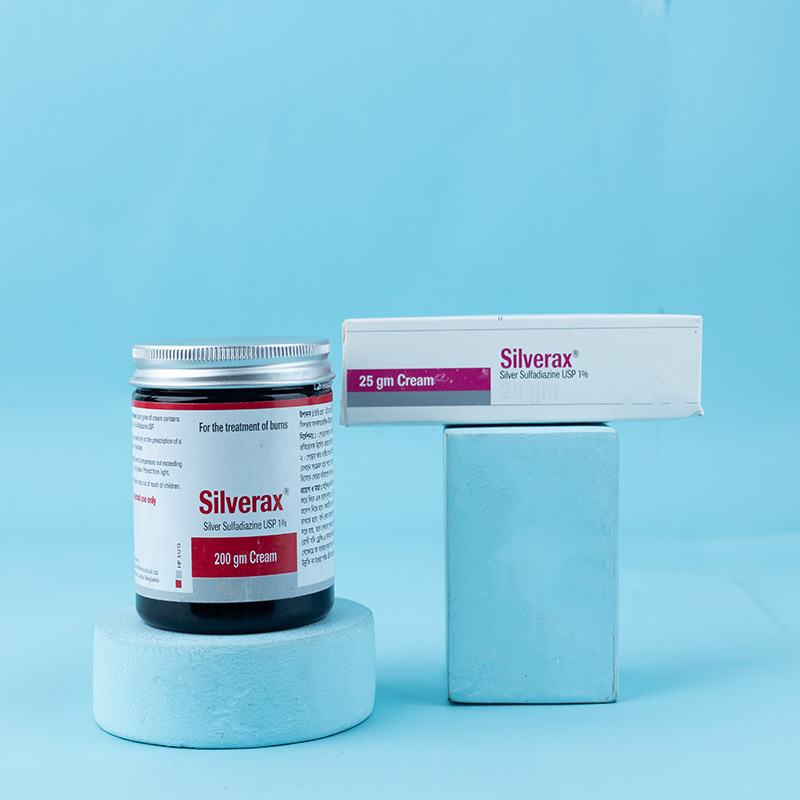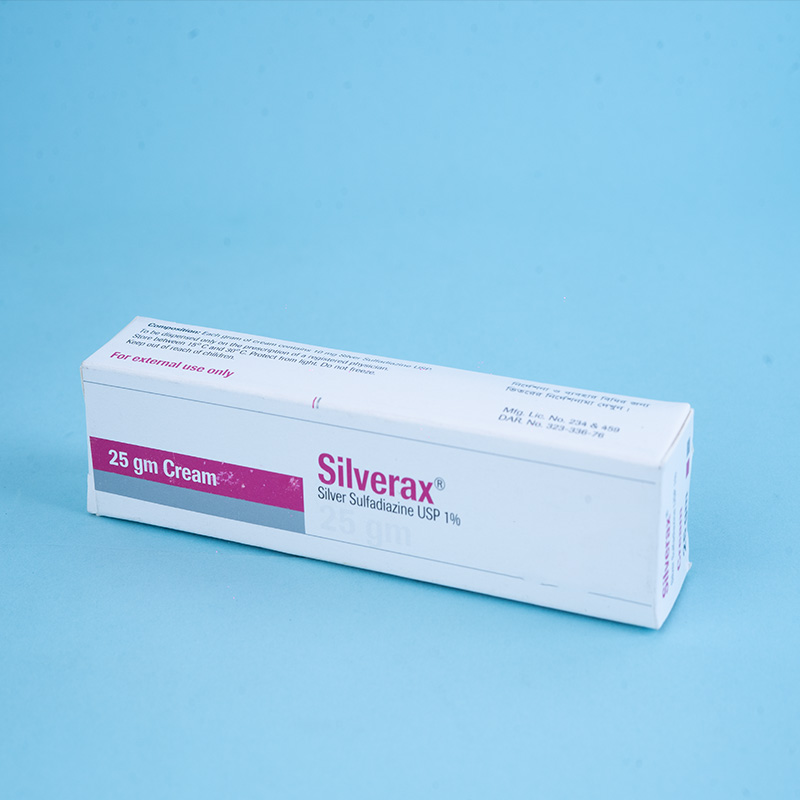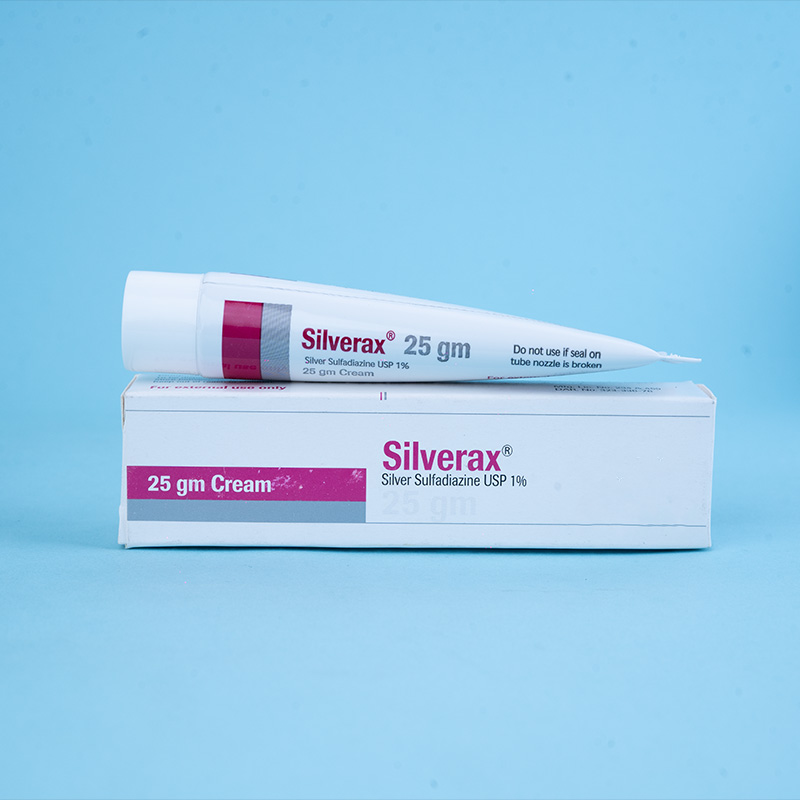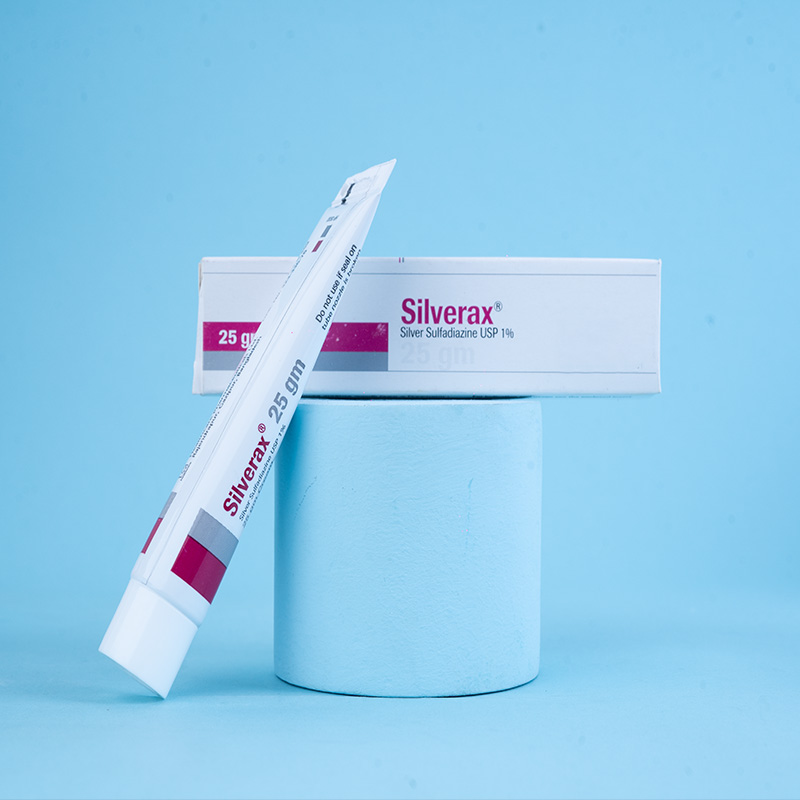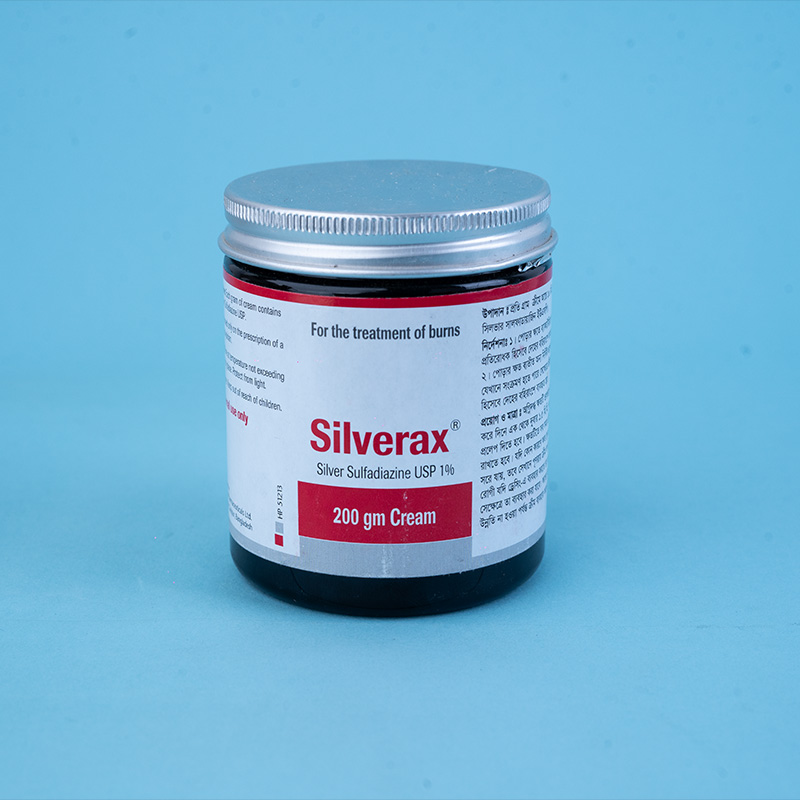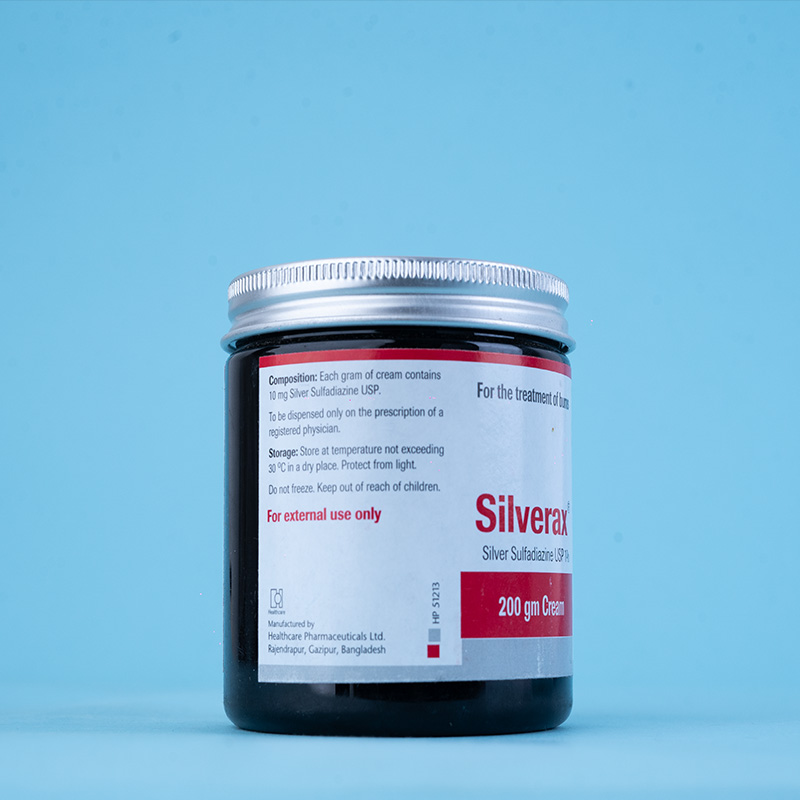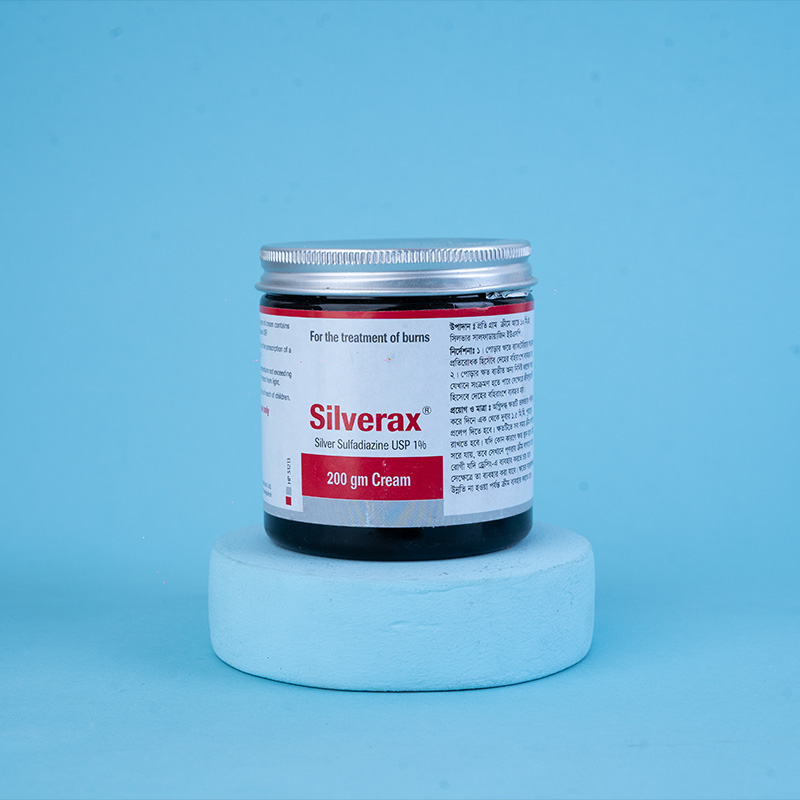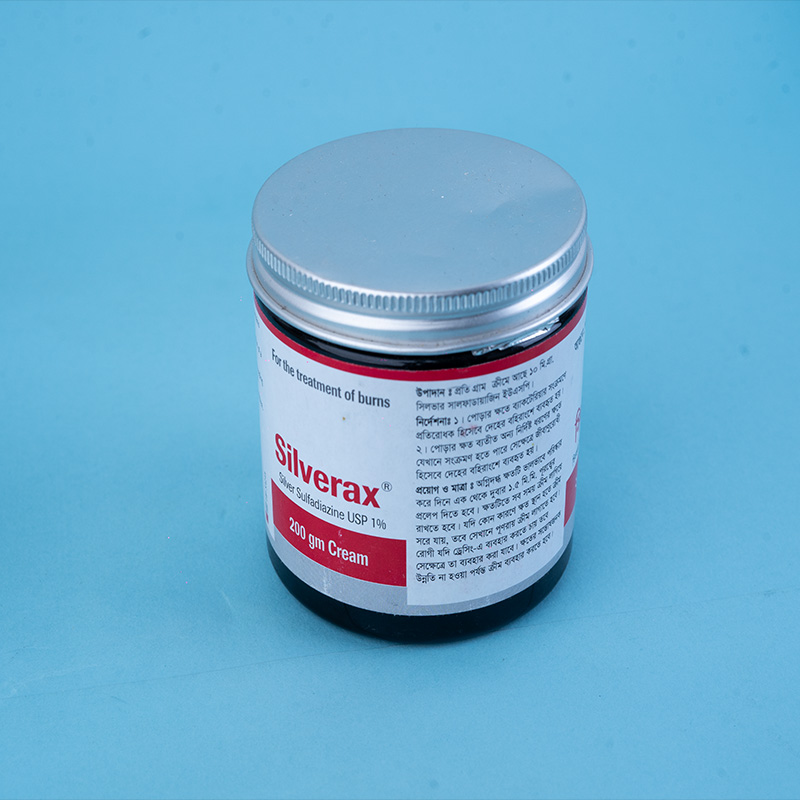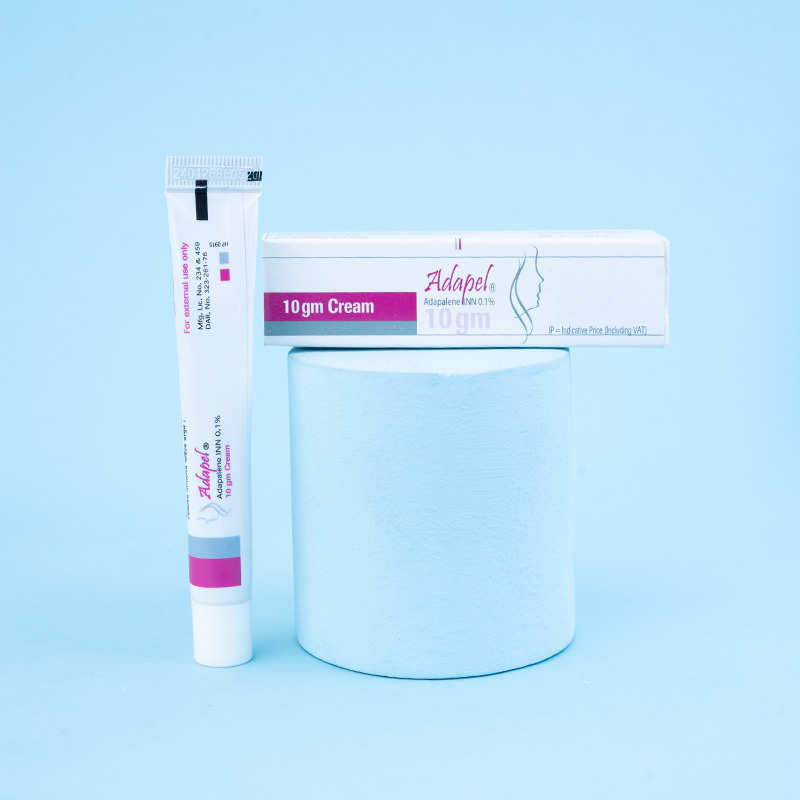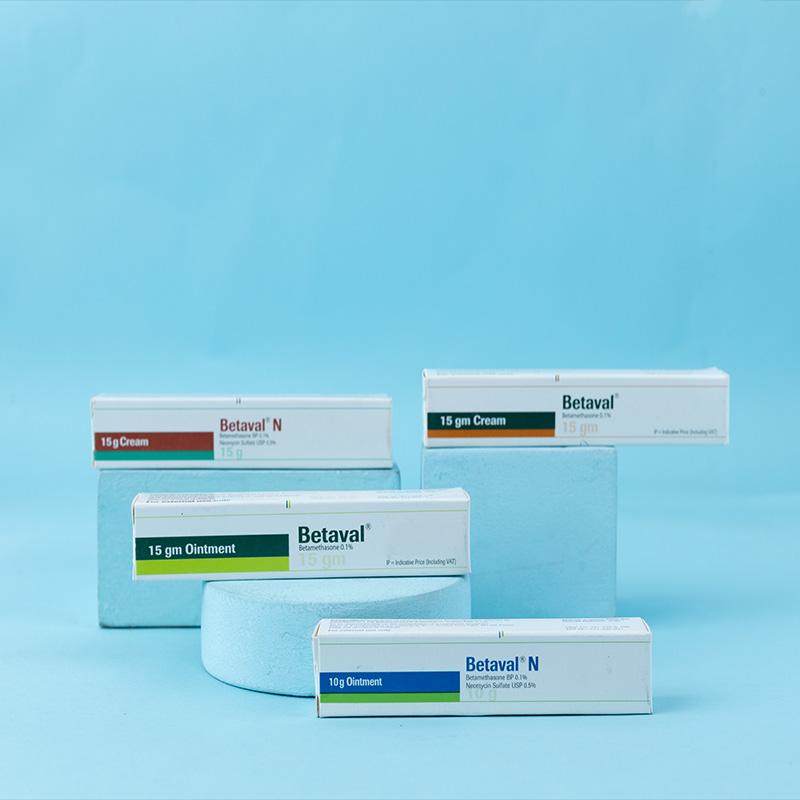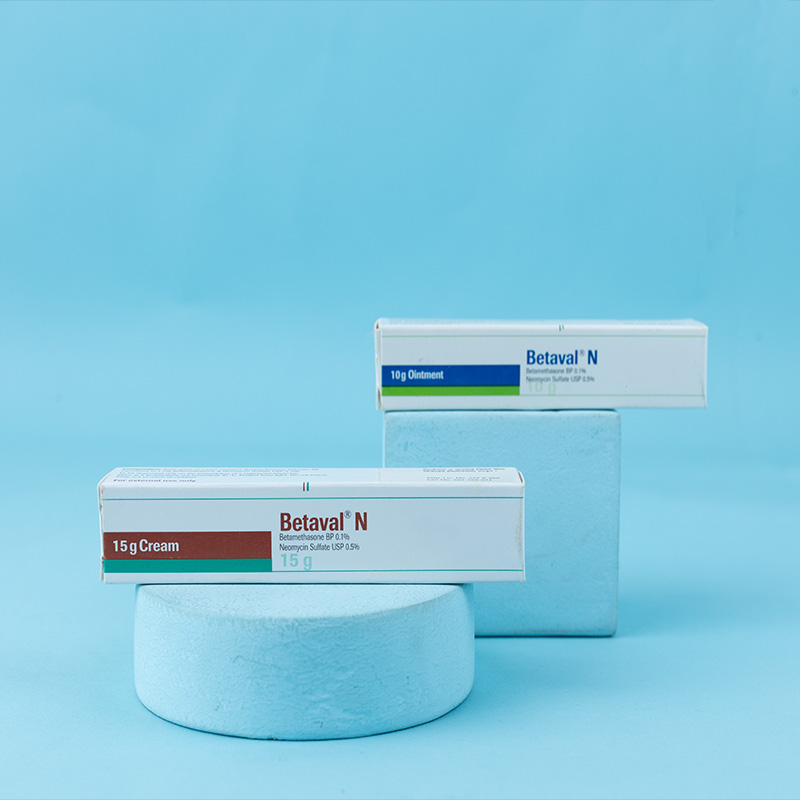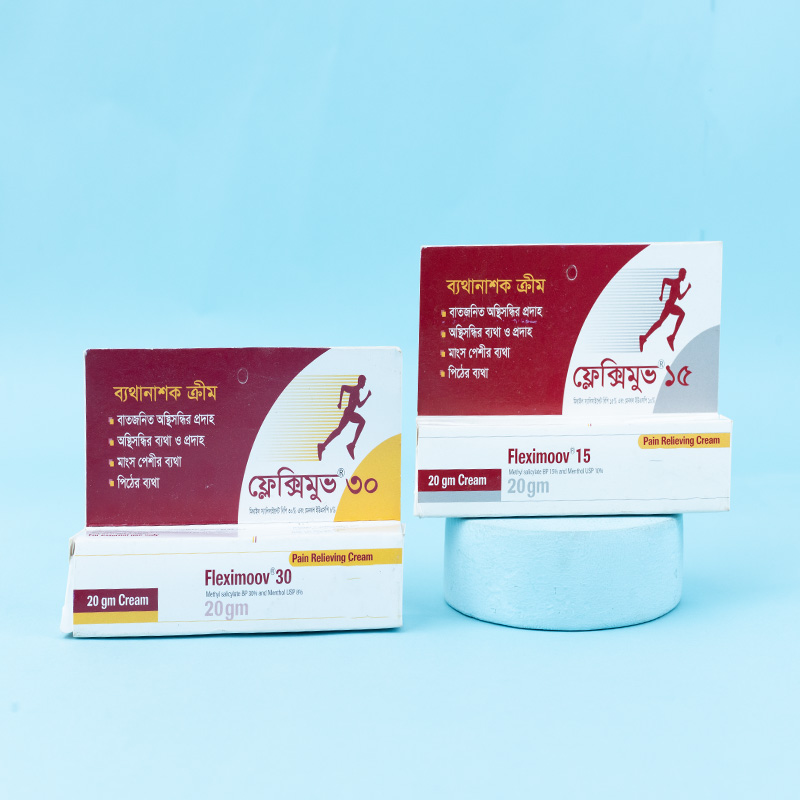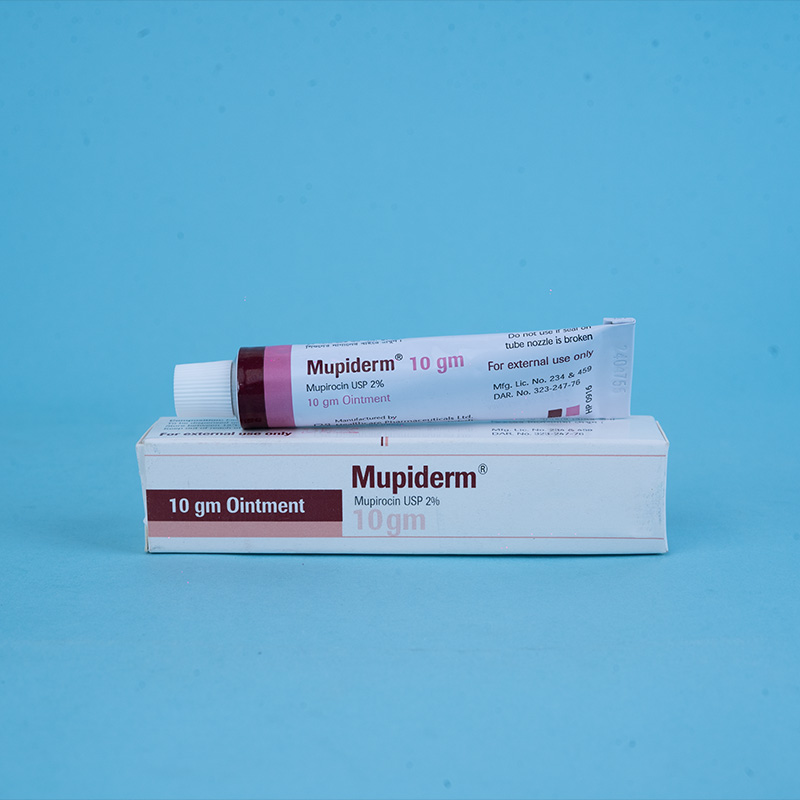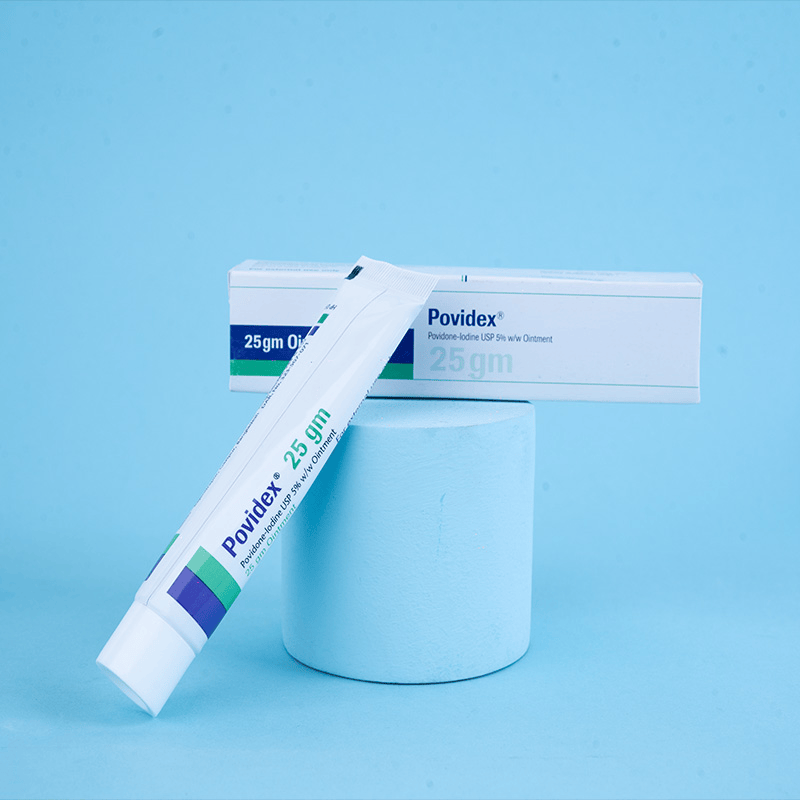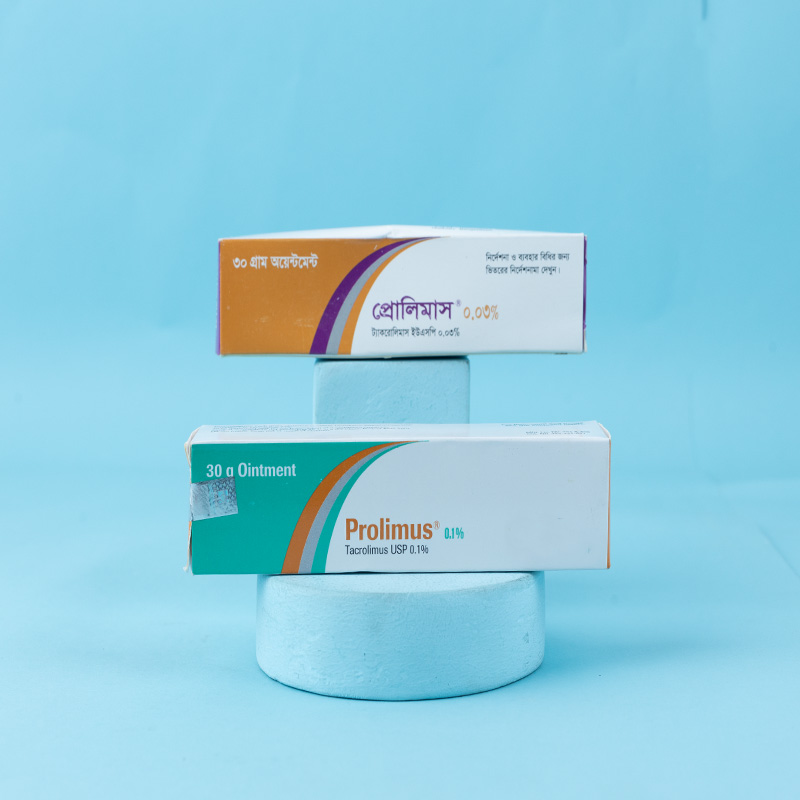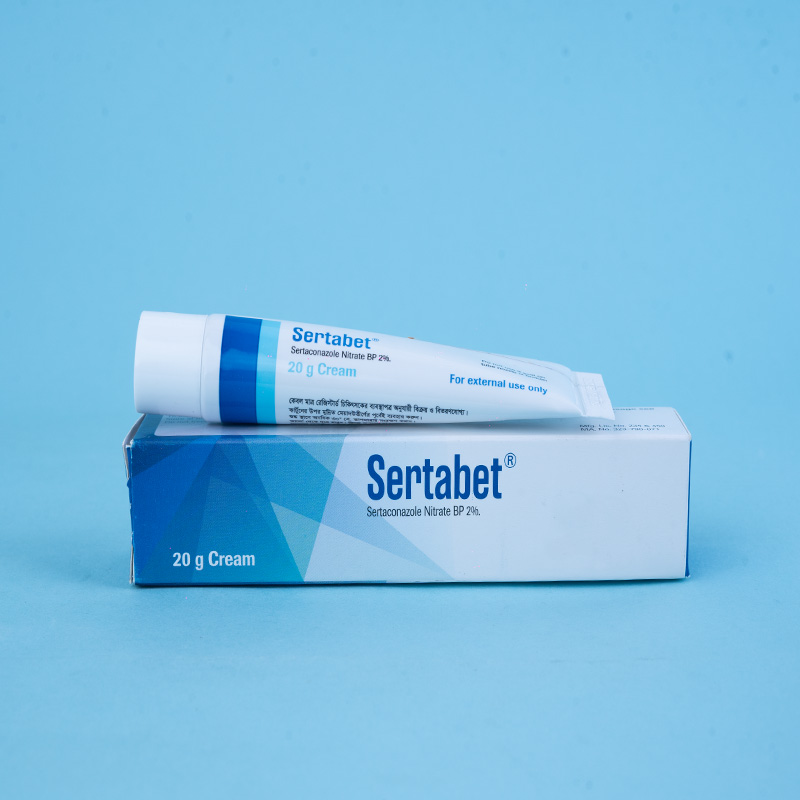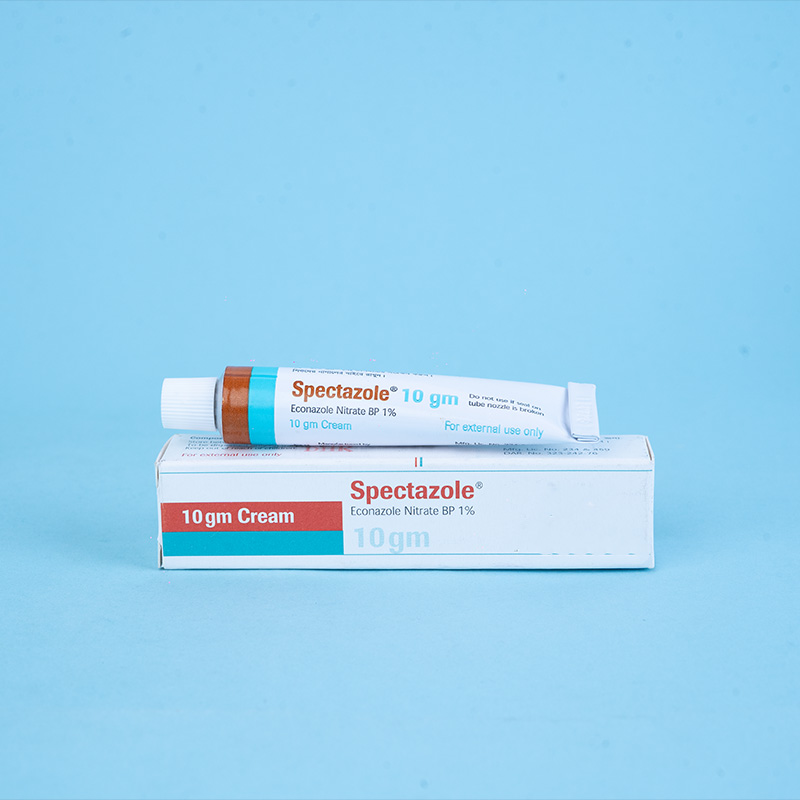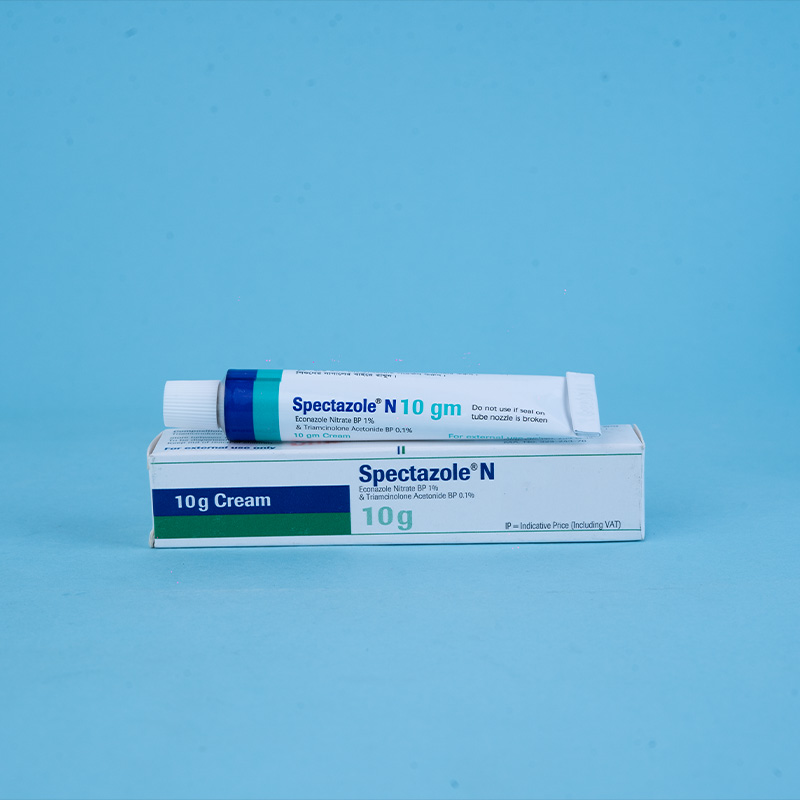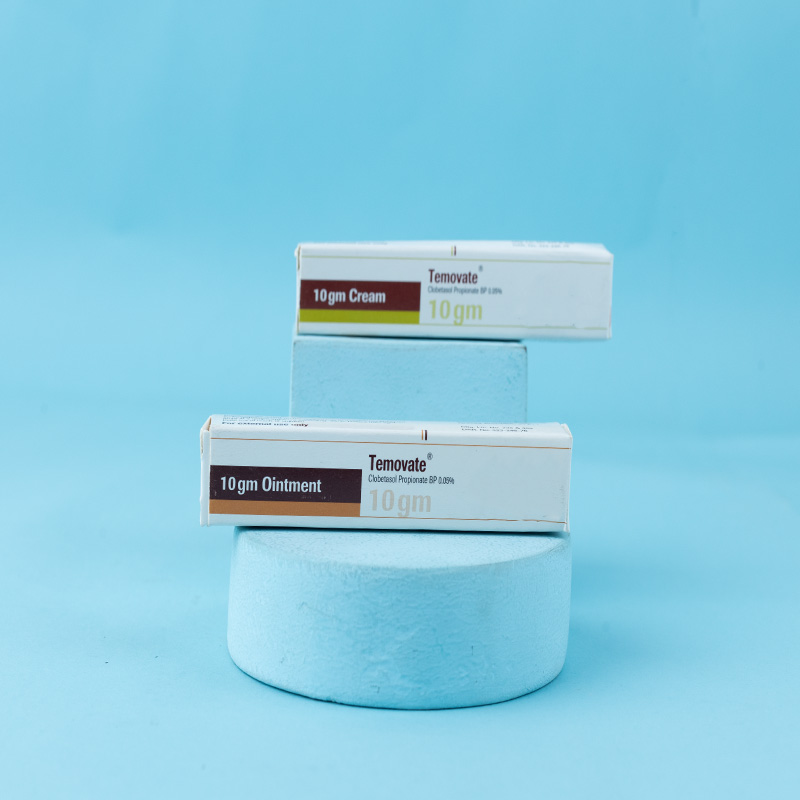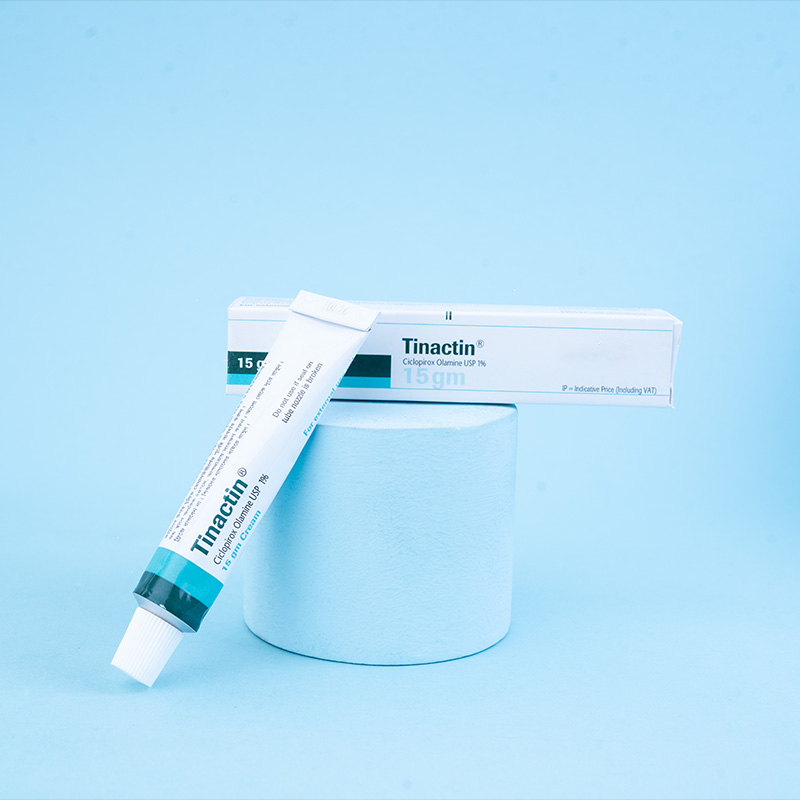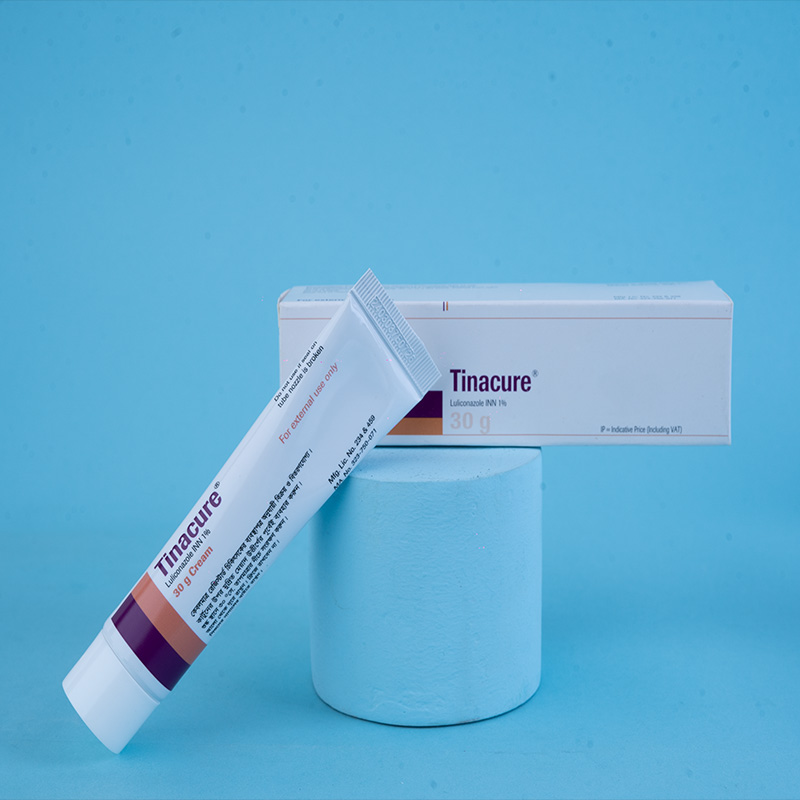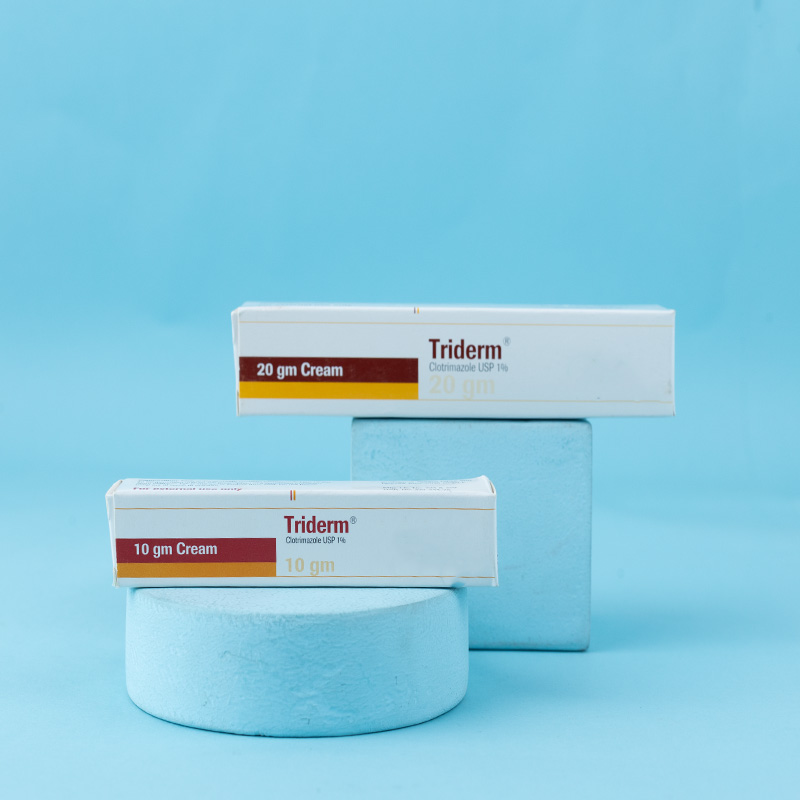Silverax®: Each gram of cream contains 10 mg Silver Sulfadiazine USP.

The mechanism of Silver Sulfadiazine's antibacterial action has not been fully elucidated. After exposure to the drug, structural changes in the bacterial cell membrane occur, including distortion and enlargement of the cell and a weakening of the cell wall membrane. This is accompanied by reduced viability in sensitive strains.
The Silver Sulfadiazine molecule dissociates, and the silver moiety binds to bacterial cells. It is believed that, after penetrating the cell wall, the silver moiety attaches to deoxyribonucleic acid (DNA) and prevents bacterial cell proliferation. There is approximately 100 times more DNA in mammalian cells than in bacterial cells. It is thought that the ratio of Silver Sulfadiazine to bacterial DNA is sufficiently high to prevent bacterial division, while the corresponding ratio to epithelial DNA is low enough not to block epithelial cell regeneration.
The sulfadiazine moiety also provides a bacteriostatic action against sensitive organisms. In adults, up to 10% of the sulfadiazine may be absorbed, and 60% to 85% of the absorbed amount is excreted in the urine. In children with 13% body surface area burns, the urinary sulfadiazine concentration was 31.8 mg/L.

Topical prophylaxis against bacterial colonization and infection in burn wounds.
Topical antibacterial management of certain contaminated or infection-prone wounds, other than burns.

Burn wounds should be cleansed, and Silverax® should be applied over the burn wound. The burn areas should be covered with Silverax® at all times. The cream should be applied once or twice daily to a thickness of approximately 1/16 inch (1.5 mm).
Whenever necessary, the cream should be reapplied to any areas where it has been removed due to patient activity. If individual patient requirements necessitate dressings, they may be used. Reapplication should be ensured immediately after hydrotherapy.
Treatment with Silverax® should be continued until satisfactory healing has occurred or until the burn site is ready for grafting. The drug should not be withdrawn from the therapeutic regimen while there remains the possibility of infection, except in cases of significant adverse reactions.

Silverax® is contraindicated in patients who are hypersensitive to it or any of the other ingredients in the preparation. It should not be used in pregnant women approaching or at term, in premature infants, or in newborns during the first two months of life.

Several cases of transient leukopenia have been reported in patients receiving Silver Sulfadiazine therapy. Other infrequently occurring events include skin necrosis, erythema multiforme, skin discoloration, burning sensation, rashes, and interstitial nephritis.

If hepatic and renal functions become impaired and drug elimination decreases, accumulation may occur. Discontinuation of the drug should be weighed against the therapeutic benefit being achieved.
When considering the use of topical proteolytic enzymes in conjunction with Silverax®, note that silver may inactivate such enzymes.

In the treatment of burn wounds involving extensive areas of the body, serum sulfa concentrations may approach adult therapeutic levels (8 mg% to 12 mg%). Therefore, in these patients, it is advisable to monitor serum sulfa concentrations.
Renal function should be carefully monitored, and the urine should be checked for sulfa crystals.

Teratogenic Effects (Pregnancy Category B): This drug should be used during pregnancy only if clearly justified, especially in pregnant women approaching or at term.
Nursing Mothers: It is not known whether Silver Sulfadiazine is excreted in human milk. A decision should be made whether to discontinue nursing or discontinue the drug, considering the importance of the drug to the mother.

The safety and effectiveness of Silver Sulfadiazine in pediatric patients have not been established.

Enzymatic debriding agents: Silver Sulfadiazine may inactivate enzymatic debriding agents; thus, concomitant use may be inappropriate.
Oral hypoglycemic agents and phenytoin: In patients with large-area burns where serum sulfadiazine levels may approach therapeutic levels, the action of oral hypoglycemic agents and phenytoin may be potentiated. Blood levels should be monitored.
Cimetidine: In patients with large-area burns, co-administration of Cimetidine has been reported to increase the incidence of leukopenia.

Store between 15° and 30°C. Protect from light. Do not freeze.
Medicine: Keep out of reach of children


